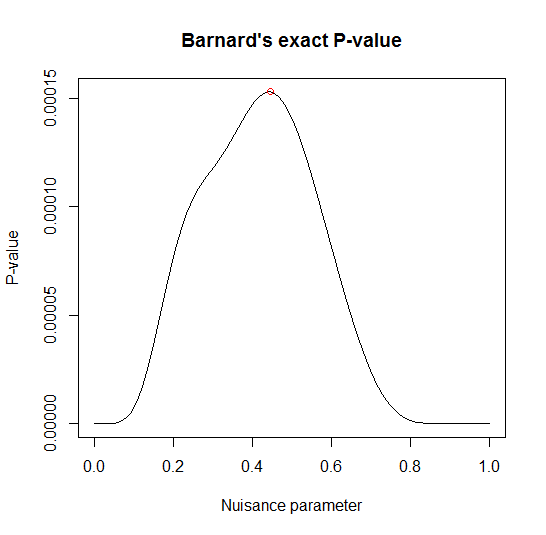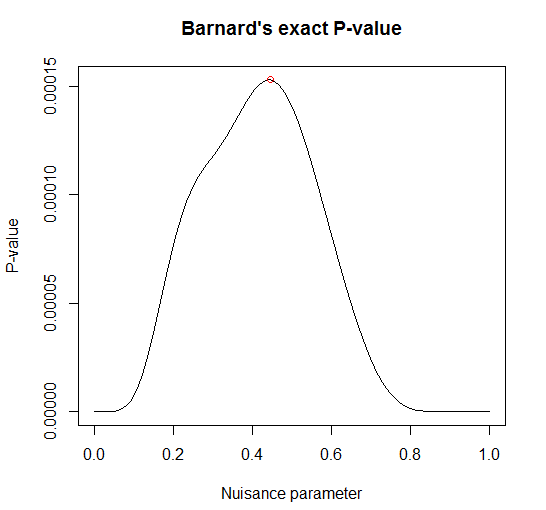(The R code for Barnard’s exact test is at the end of the article, and you could also just download it from here, or from github)

About Barnard’s exact test
About half a year ago, I was studying various statistical methods to employ on contingency tables. I came across a promising method for 2×2 contingency tables called “Barnard’s exact test“. Barnard’s test is a non-parametric alternative to Fisher’s exact test which can be more powerful (for 2×2 tables) but is also more time-consuming to compute (References can be found in the Wikipedia article on the subject).
The test was first published by George Alfred Barnard (1945) (link to the original paper in Nature). Mehta and Senchaudhuri (2003) explain why Barnard’s test can be more powerful than Fisher’s under certain conditions:
When comparing Fisher’s and Barnard’s exact tests, the loss of power due to the greater discreteness of the Fisher statistic is somewhat offset by the requirement that Barnard’s exact test must maximize over all possible p-values, by choice of the nuisance parameter, π. For 2 × 2 tables the loss of power due to the discreteness dominates over the loss of power due to the maximization, resulting in greater power for Barnard’s exact test. But as the number of rows and columns of the observed table increase, the maximizing factor will tend to dominate, and Fisher’s exact test will achieve greater power than Barnard’s.
About the R implementation of Barnard’s exact test
After finding about Barnard’s test I was sad to discover that (at the time) there had been no R implementation of it. But last week, I received a surprising e-mail with good news. The sender, Peter Calhoun, currently a graduate student at the University of Florida, had implemented the algorithm in R. Peter had found my posting on the R mailing list (from almost half a year ago) and was so kind as to share with me (and the rest of the R community) his R code for computing Barnard’s exact test. Here is some of what Peter wrote to me about his code:
On a side note, I believe there are more efficient codes than this one. For example, I’ve seen codes in Matlab that run faster and display nicer-looking graphs. However, this code will still provide accurate results and a plot that gives the p-value based on the nuisance parameter. I did not come up with the idea of this code, I simply translated Matlab code into R, occasionally using different methods to get the same result. The code was translated from:
Trujillo-Ortiz, A., R. Hernandez-Walls, A. Castro-Perez, L. Rodriguez-Cardozo. Probability Test. A MATLAB file. URL
http://www.mathworks.com/matlabcentral/fileexchange/loadFile.do?objectId=6198
My goal was to make this test accessible to everyone. Although there are many ways to run this test through Matlab, I hadn’t seen any code to implement this test in R. I hope it is useful for you, and if you have any questions or ways to improve this code, please contact me at [email protected]
